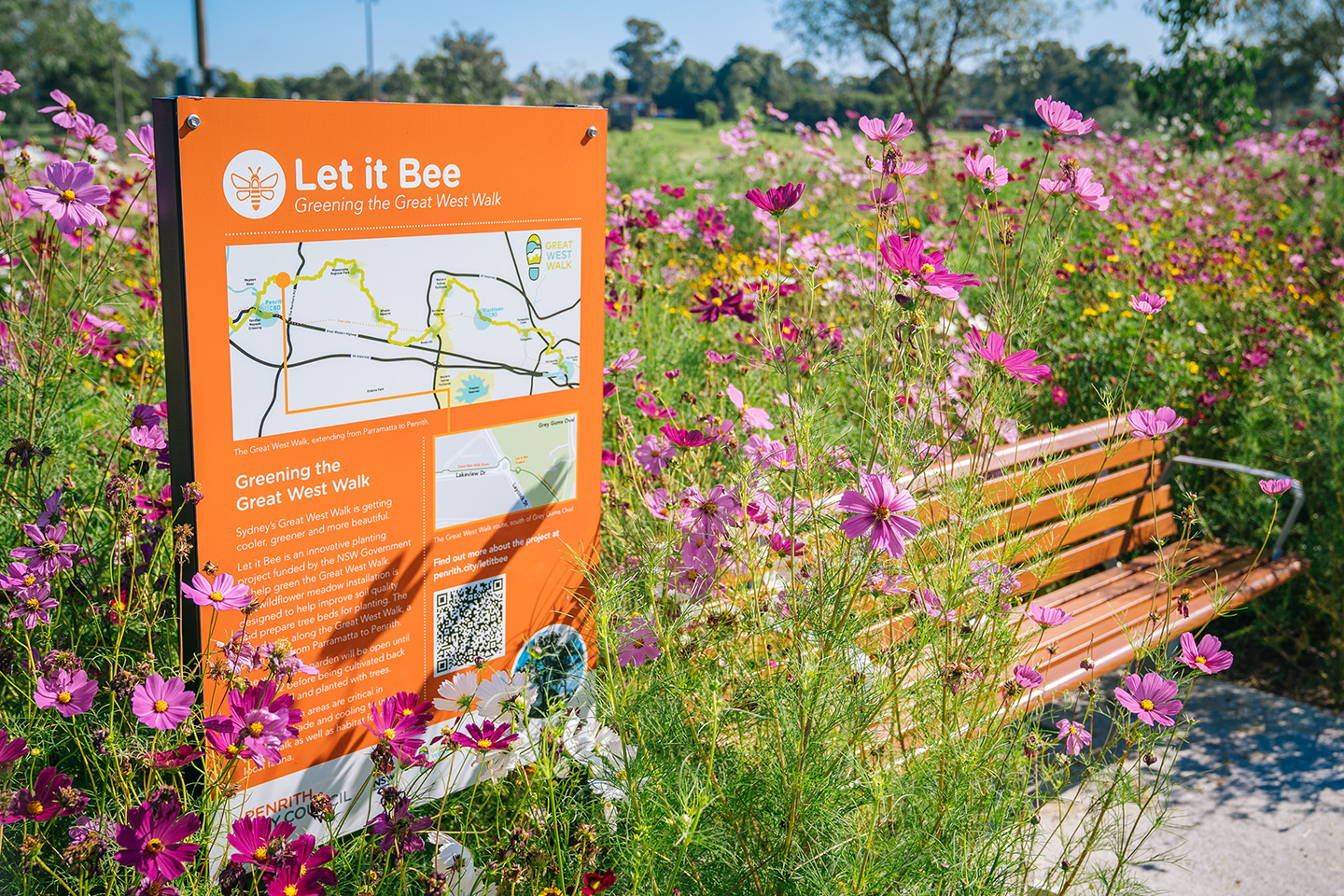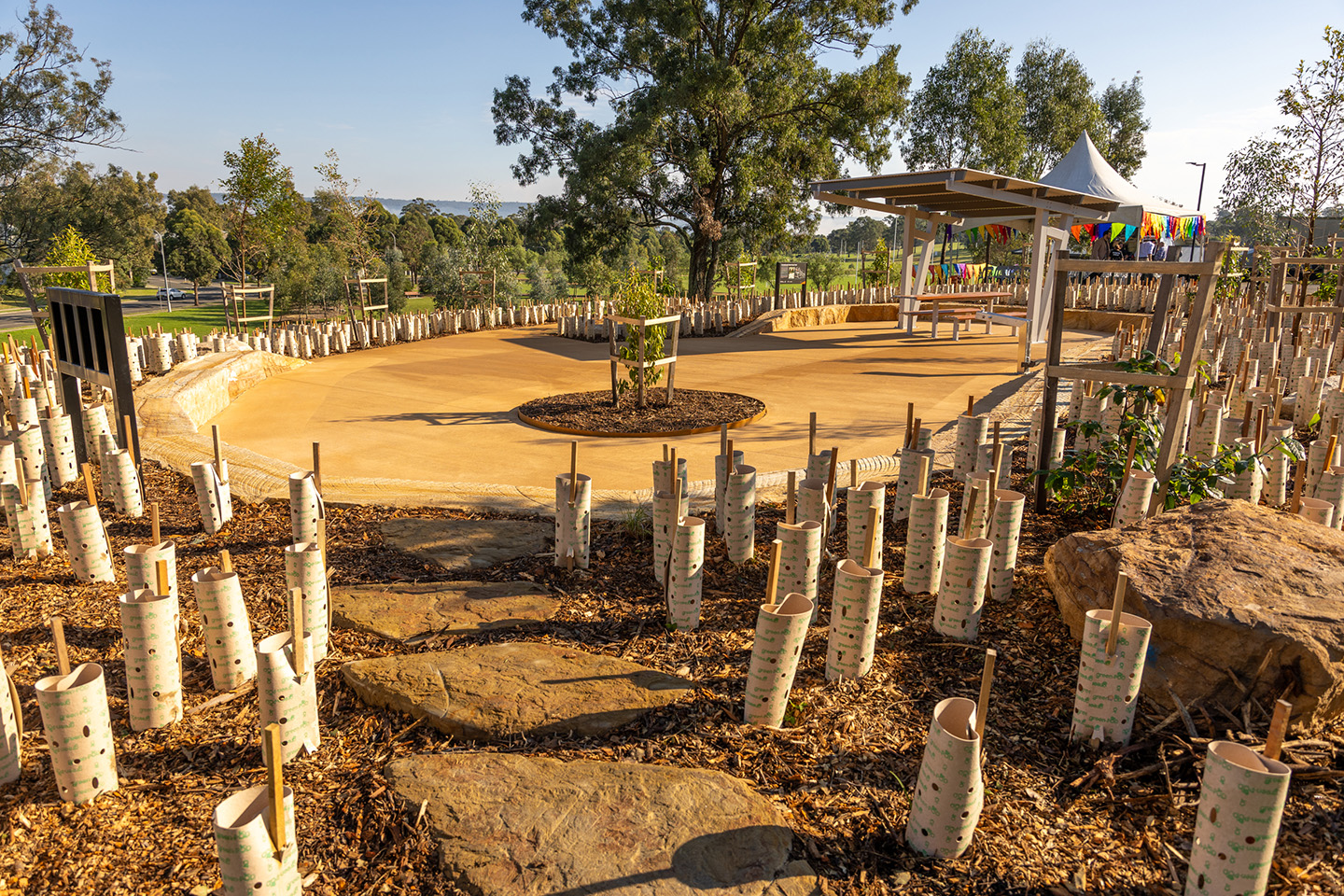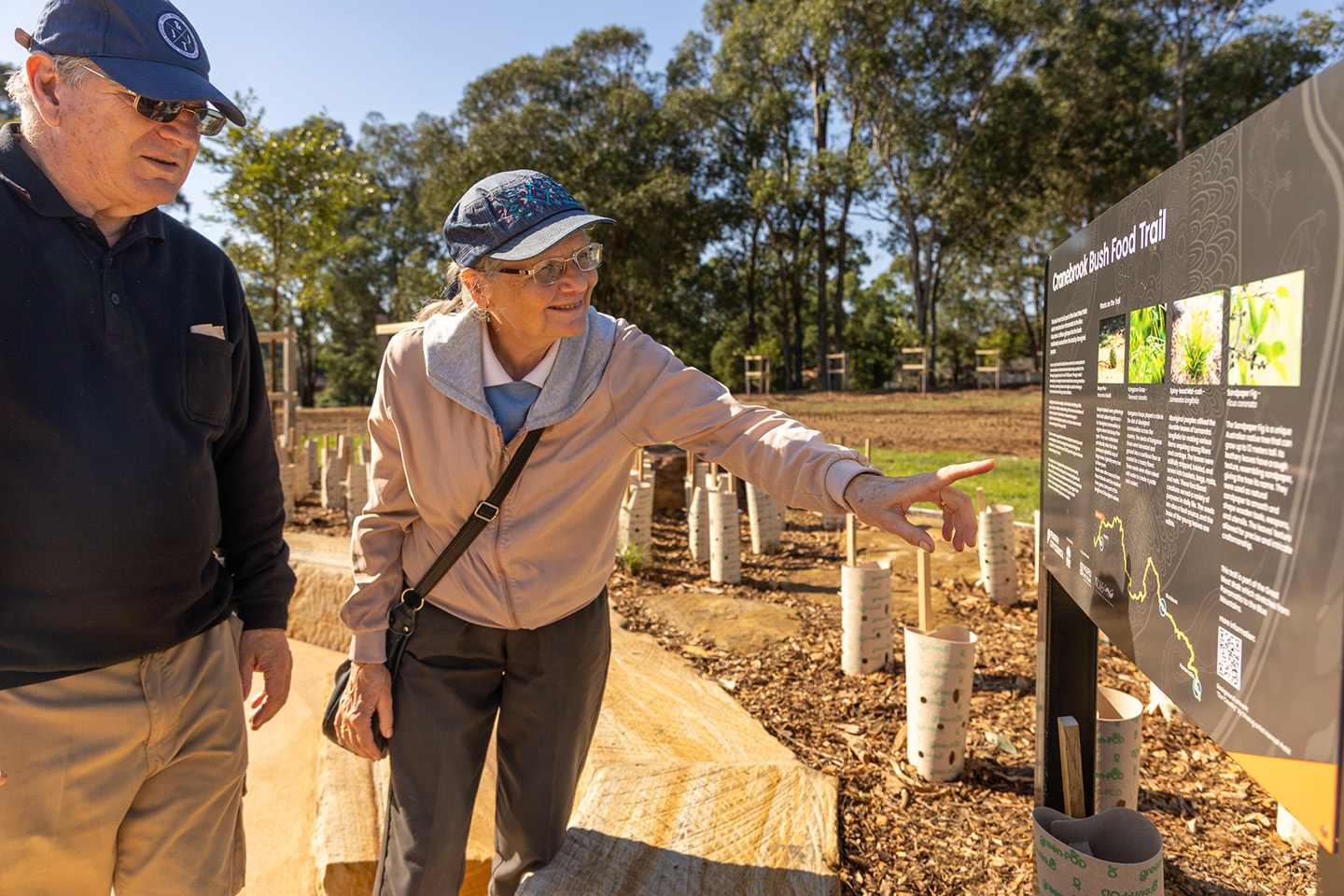The Bush Food Trail (Trail) invites the community to actively engage with nature and immerse themselves in First Nations culture.
Created in partnership with local First Nations organisations, including Muru-Mittigar and Nepean Community and Neighbourhood Services, the Trail integrates environmental sustainability with First Nations cultural awareness.

Stretching across lands traditionally owned by the Dharug Language Group, the Trail is part of the Great West Walk – a 140 km walking route stretching from Parramatta to the Blue Mountains.
It was funded by the NSW Government and Penrith City Council through the Greening the Great West Walk program.
A cultural experience
Visitors to the Trail can explore how native plants were used by First Nations peoples. For instance, the Bunya Pine played a role in ceremonial gatherings, while Kangaroo Grass was ground into a nutritious flour. Spiny-head Mat-rush was crafted into various items like baskets and mats, and Sandpaper Fig was used as natural sandpaper for smoothing tools.
Educational signage along the Trail provides rich insights into these traditional uses, connecting visitors with the region's cultural and ecological heritage.
Penrith Mayor Todd Carney emphasised its importance:
“We wanted the bush food trail to provide insight into the knowledge of First Nations peoples — specifically the Dharug Language Group — and how they’ve thrived in Cranebrook for over 50,000 years. The signage provides information about the plants and their significance and use to Aboriginal communities in our region.”
The project also includes 2 rest areas that support workshops, educational activities and community gatherings to enrich the cultural and educational experience of visitors.

Urban cooling
Tree and understorey planting along the trail are also instrumental in cooling the urban environment, offering shade and supporting local biodiversity.
By mitigating temperature increases in urban areas, the Bush Food Trail contributes to local climate resilience, showcasing how urban greening can be a tool for adapting to climate impacts while celebrating cultural heritage.
Community feedback highlights the trail’s success, with locals praising its low-impact design and its dual benefits for education and the environment. The enthusiasm for this project underscores a broader interest in creating more spaces that celebrate cultural heritage and promote ecological stewardship.
The Bush Food Trail connects visitors with the region's natural history and First Nations heritage while actively contributing to climate adaptation strategies. It stands as model of how urban greening initiatives can celebrate and preserve our natural environment and cultural heritage, setting a precedent for future urban and environmental planning efforts.
